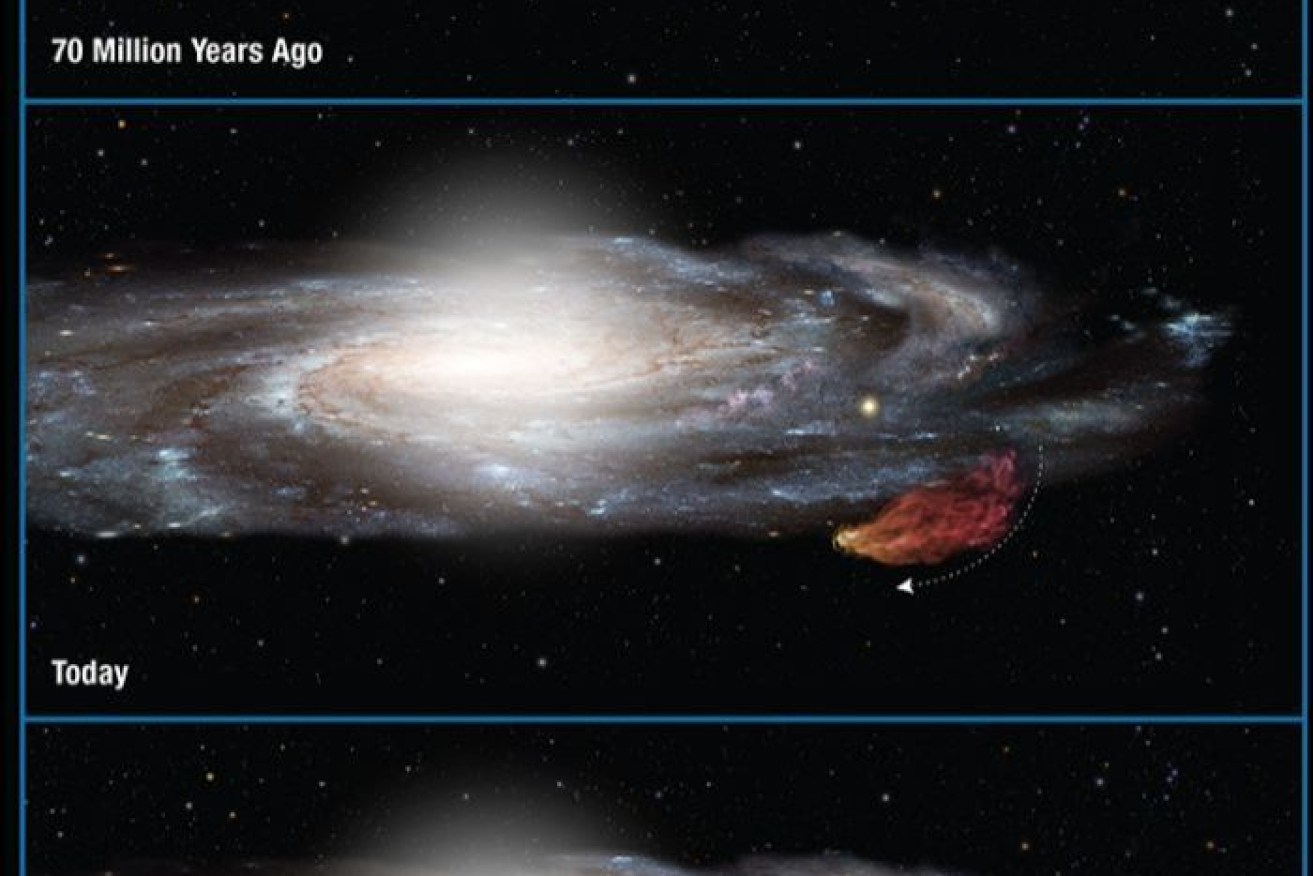Giant, invisible gas cloud heading for Milky Way

The trajectory of the Smith Cloud is shown. Photo: NASA/ESA/A. Feild
An immense cloud of invisible hydrogen gas is plummeting towards our galaxy at nearly 1,130,000 kilometres per hour, Hubble Space Telescope astronomers have found.
The so-called Smith Cloud — measured at 11,000 light years long and 2,500 light years across — is expected to plough into the Milky Way in about 30 million years, igniting a spectacular burst of star formation, perhaps providing enough gas to make 2 million suns.
Although hundreds of gas clouds are known around the galaxy, the Smith Cloud — named after doctoral astronomy student Gail Smith, who detected the radio waves emitted by its hydrogen — is considered unique because its trajectory is well known to scientists.
• This self-combusting cargo could be on the next flight
• The ‘misogynistic’ film DiCaprio doesn’t want you to see
• Morrison’s big GST gamble
New Hubble observations suggest the cloud was launched from the outer regions of the galactic disk around 70 million years ago, and having initially travelled away, is now curving back towards the Milky Way.

The trajectory of the Smith Cloud is shown.
Photo: NASA/ESA/A. Feild
Astronomers said if the cloud could be seen in visible light, it would stretch across the sky with an apparent diameter 30 times greater than the full moon.
“The cloud is an example of how the galaxy is changing with time,” explained team leader Andrew Fox of the Space Telescope Science Institute in Baltimore, Maryland.
“It’s telling us that the Milky Way is a bubbling, very active place where gas can be thrown out of one part of the disk and then return back down into another.
“Our galaxy is recycling its gas through clouds, the Smith Cloud being one example, and will form stars in different places than before.
“Hubble’s measurements of the Smith Cloud are helping us to visualize how active the disks of galaxies are.”
The team used the telescope to measure the cloud’s chemical composition to determine where it came from and found it was rich in sulphur, matching the Milky Way’s outer disk.
The findings showed the Smith Cloud originated from our own galaxy and was enriched by stars, rather than from outside, where it would have been comprised of pristine hydrogen.
But questions still remain as to what launched it from the Milky Way and how it remained intact. The team’s research is set to appear in The Astrophysical Journal Letters.









